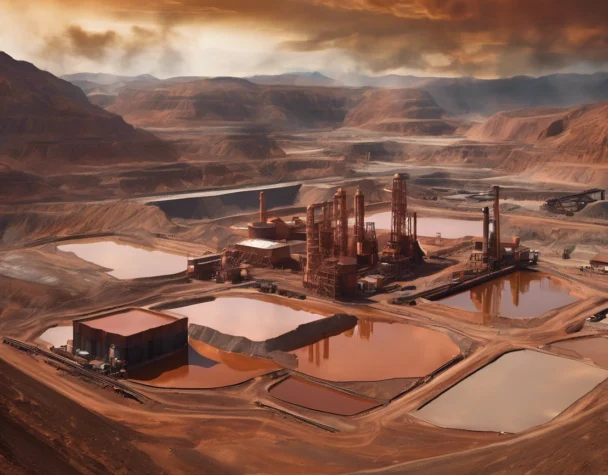
Current Trends and Challenges in the Copper Industry
Thu, March 06, 2025The copper industry, a critical component of the global economy, plays a vital role in various sectors including construction, electronics, and transportation. As we navigate through evolving economic landscapes, understanding the current trends and challenges facing this industry is essential for stakeholders ranging from investors to policymakers. This article discusses the volatile nature of the copper market and identifies the key challenges that producers must address to remain competitive and sustainable.
Navigating the Volatile Copper Market
Copper prices have experienced significant fluctuations due to a complex interplay of factors including geopolitical tensions, supply chain disruptions, and shifts in demand driven by the green energy transition. These price volatilities pose a major challenge for budgeting and strategic planning among copper producers and consumers. As nations strive towards decarbonization, the demand for copper, integral in renewable technologies such as electric vehicles and wind turbines, is projected to surge, potentially leading to even greater market instability.
In response to market volatility, companies involved in copper mining and production are increasingly turning to technological innovations to improve efficiency and reduce costs. Advanced analytics and automation are being leveraged to enhance mining operations and manage risks associated with price fluctuations more effectively. Moreover, strategic partnerships and long-term contracts are becoming more common as ways to stabilize supply chains and secure steady streams of resources.
However, the global nature of the copper supply chain exposes it to various international issues that can affect market stability. Trade policies, tariffs, and political unrest in copper-rich regions can greatly impact global supply and, consequently, prices. Stakeholders in the copper industry must stay informed and agile, ready to adapt strategies in response to both local and international changes that could sway the market dynamics.
Challenges Ahead for Copper Producers
One of the foremost challenges facing copper producers is the increasing scrutiny over environmental and social governance (ESG) criteria. As global awareness and regulations around sustainable practices rise, copper mining companies are under pressure to improve their environmental footprint. This includes reducing greenhouse gas emissions, managing waste, and ensuring ethical labor practices, which in turn necessitate significant investments in cleaner technologies and operational overhauls.
Furthermore, the depletion of high-grade copper ores poses a significant technical challenge, requiring more intensive processing that is both costlier and more environmentally demanding. As ore grades decline, the energy consumption and carbon emissions associated with extracting each pound of copper increase, which could jeopardize the industry’s ability to meet ESG standards and economic sustainability simultaneously.
Lastly, maintaining social license to operate is becoming increasingly difficult. Local communities, governments, and non-governmental organizations are demanding greater input and more substantial benefits from mining projects. This trend towards increased stakeholder engagement requires copper producers to invest more heavily in community relations and to develop more comprehensive strategies to address local concerns, ranging from land rights to economic development and environmental protection.
The copper industry is at a critical crossroads, with volatile markets and stringent challenges demanding innovative solutions and adaptive strategies. Addressing these issues effectively not only requires a commitment to technological advancements and sustainability but also a proactive approach to stakeholder engagement and global market dynamics. As the industry continues to evolve, those who can anticipate changes and act swiftly will likely lead the market in the years to come, shaping the future of copper in our increasingly interconnected and environmentally-conscious world.

